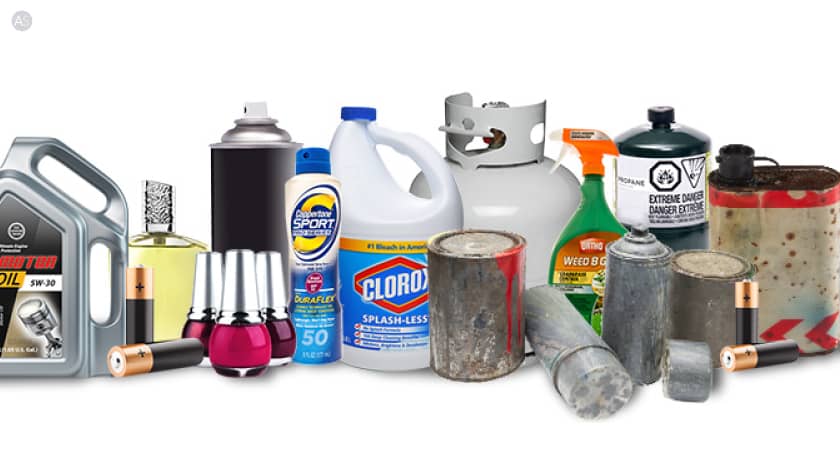How to Dispose of Hazardous Materials Before Moving

Moving to a new home is an exciting journey, but it's crucial to responsibly dispose of hazardous materials before you pack up and move. In this blog, we will discuss the common hazardous materials found in our households and the steps to dispose of them wisely. So, let's dive in!
Common Hazardous Materials in Our Homes
Before discussing the disposal steps, let's first identify the common hazardous materials found in most households:
-
Paints and solvents: These may contain harmful chemicals, such as lead and volatile organic compounds (VOCs), which can cause respiratory problems and environmental damage if not disposed of correctly.
-
Pesticides and insecticides: These chemicals are designed to kill pests, but they can also be harmful to humans and pets if ingested or inhaled.
-
Batteries: Old and damaged batteries can leak harmful chemicals, such as lead and acid, which can contaminate the soil and water supply.
-
Cleaning products: Many household cleaning products contain chemicals that can be hazardous to our health and the environment.
-
Electronics: Old and broken electronic devices, such as TVs, computers, and smartphones, can contain hazardous materials like lead, mercury, and cadmium.
-
Fluorescent bulbs: These energy-saving bulbs contain small amounts of mercury, which can be harmful if released into the environment.
-
Automotive products: Oil, antifreeze, and other automotive fluids can be toxic and should never be poured down the drain or thrown in the trash.
Also Read: List of Items that Movers will not Shift
Steps to Dispose of Hazardous Materials Wisely
Step 1: Identify and segregate hazardous materials
Go through your home and gather all hazardous materials in one place. Be sure to check your garage, basement, and other storage areas for items that may have been forgotten. Segregate the hazardous materials according to their type (e.g., paints, pesticides, batteries) to make the disposal process easier.
Step 2: Check local regulations and disposal options
Before disposing of hazardous materials, research the local regulations and disposal options in your area. Many cities and towns have specific guidelines and facilities for hazardous waste disposal. You can contact your local waste management authority or visit their website for information on hazardous waste disposal options.
Step 3: Use up or donate usable materials
If you have hazardous materials that are still usable, such as paint or cleaning products, consider using them up before moving. Alternatively, you can donate these items to friends, neighbors, or local organizations that can make use of them.
Step 4: Dispose of hazardous materials at designated facilities
Take your hazardous materials to the designated disposal facilities in your area. These facilities are designed to handle hazardous waste safely and prevent environmental contamination. Be sure to follow the guidelines provided by the facility for proper disposal.
Step 5: Recycle electronics and batteries
Many electronics and batteries can be recycled instead of thrown away. Look for local recycling programs or drop-off points that accept these items. Some electronics retailers and manufacturers also offer take-back programs for old devices.
Step 6: Safely dispose of fluorescent bulbs
Fluorescent bulbs should be handled carefully to avoid breaking them and releasing mercury. Look for local recycling programs or facilities that accept these bulbs for safe disposal. Some hardware stores also offer take-back programs for fluorescent bulbs.
Step 7: Properly dispose of automotive products
Automotive fluids should never be poured down the drain or thrown in the trash. Instead, take them to an automotive repair shop or a designated disposal facility that accepts these materials. Many auto parts stores also offer recycling programs for used motor oil and other automotive fluids.
Conclusion
Proper disposal of hazardous materials before moving is not only a responsible choice for the safety of your family and the environment, but it also makes the moving process smoother and more efficient. By following the steps outlined in this blog, you can ensure that your move is as eco-friendly and safe as possible.
By taking the time to properly dispose of hazardous materials, you'll not only be protecting the environment but also setting a positive example for others in your community. Remember, we all have a role to play in protecting our environment and ensuring a sustainable future. By properly disposing of hazardous materials before moving, you're taking an important step in contributing to a cleaner, greener, and safer world.











